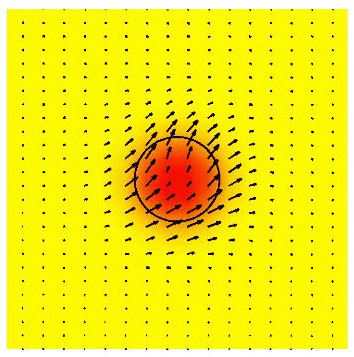Spin soliton could make cell phone communication more secure
September 16, 2010
Researchers at the National Institute of Standards and Technology (NIST) have found theoretical evidence of a new way to generate the microwave transmissions used in modern communication devices such as cell phones. Their analysis, if supported by experimental evidence, could contribute to a new generation of wireless technology that would be more secure and resistant to interference than conventional devices.
The team’s findings point toward an oscillator that would harness the spin of electrons to generate microwaves, which are used by mobile devices. Electron spin is a fundamental property, in addition to basic electrical charge, that can be used in electronic circuits. The discovery adds another potential effect to the list of spin’s capabilities.
The team’s work—a novel variation on several types of previously proposed experimental oscillators—predicts that a special type of stationary wave called a “soliton” can be created in a layer of a multilayered magnetic sandwich. Solitons are shape-preserving waves that have been seen in a variety of media. (They first were observed in a boat canal in 1834 and now are used in optical fiber communications.)
Creating the soliton requires that one of the sandwich layers be magnetized perpendicular to the plane of the sandwiched layers; then an electric current is forced through a small channel in the sandwich. Once the soliton is established, the magnetic orientation oscillates at more than a billion times a second, the frequency of microwaves.
“You might use this effect to create an oscillator in cell phones that would use less energy than those in use today,” NIST physicist Thomas Silva. “And the military could use them in secure communications as well. In theory, you could change the frequency of these devices quite rapidly, making the signals very hard for enemies to intercept or jam.”
Reference:: * M.A. Hoefer, T.J. Silva and M.W. Keller. Theory for a dissipative droplet soliton excited by a spin torque nanocontact. Physical Review B, 82, 054432 (2010), Aug. 30. 2010. DOI: 10.1103/PhysRevB.82.054432
More info: National Institute of Standards and Technology (NIST) news
